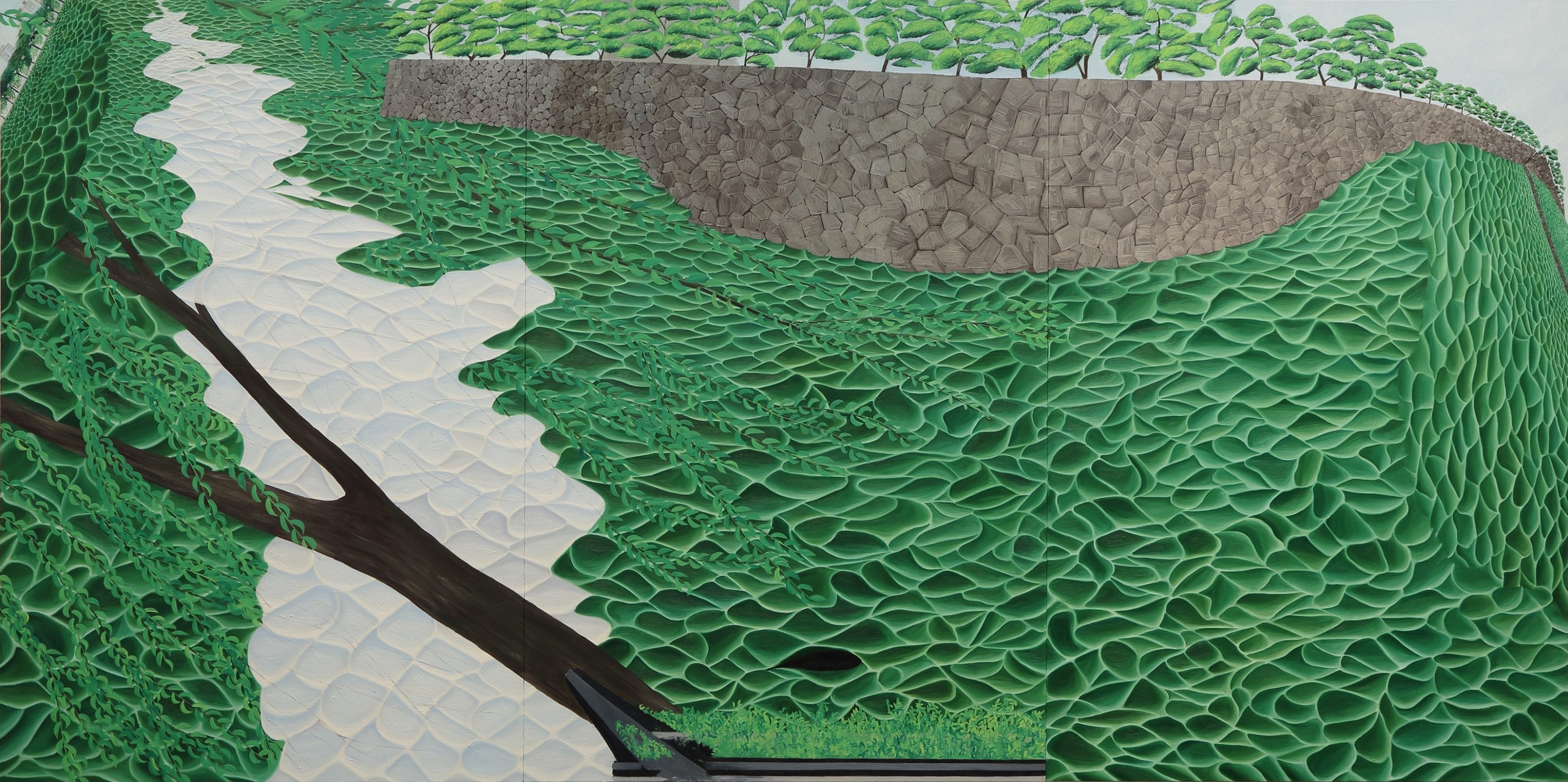Exhibition
Seia Suzuki : Surface 2014 – 2020
June 6 - June 28, 2020

The Surface of the Water 14_01
2014
oil on canvas
194.0 x 390.9cm
Maki Fine Arts is pleased to present Surface 2014 – 2020, Seia Suzuki’s first solo show at Maki Fine Arts, starting Saturday, June 6, 2020.
—
“Ripples and Wrinkles: Paintings by Seia Suzuki”
Takashi Okazato, Assistant Curator at The Ueno Royal Museum
Seia Suzuki was born in 1986 in Tokyo, Japan, and began exhibiting his works in 2008 for shows such as Tokyo Wonder Wall and Shell Art Award. He received the VOCA Prize at The Vision of Contemporary Art 2012. In Surface 2014 – 2020, viewers will be able to follow Suzuki’s evolution as an artist through his works created from 2013 to 2019.
In his early creative years, Suzuki’s paintings were based on photographs. But even when he tried to push out what wasn’t in his memory, he found himself influenced too much by the photographs and was not satisfied with the results. In 2012, he decided to change his creative approach and started taking notes on the sceneries he saw and based his paintings on those notes instead of photographs.
In many of his paintings, Suzuki includes water surfaces. One such example is “The Surface of the Water 14_01,” one of his central works in Surface 2014 – 2020. This work depicts the moat of the imperial palace located in front of Dai-ichi Life Group’s Hibiya office–the very first space Suzuki showcased the painting. On the upper portion of the canvas, there is an exaggerated curve made by the border between the water surface and the stone wall. In the lower left, a tree branch extends diagonally. Both the curve and the branch function as accents on the canvas that is almost completely covered in green. A dramatic piece of work emerges from the green water surface that takes up most of the canvas, but the artist’s interest appears to be focused on its ripples. In Suzuki’s works, at times the ripples echo the greens of the lotus and tree leaves, and at other times they become strokes that mimic mountain ridge lines.
Several works exhibited in the show display wrinkles on the canvas. One may see a resemblance between the wrinkles and the ripples when comparing them in a photograph, but the structural purpose of the two are very different. While one may assume surface wrinkles would hinder the drawing process for an artist, Suzuki says drawing on a completely flat surfaces without any snags makes the support medium feel deficient. Instead of looking at the wrinkles as obstacles, the artist eagerly embraces and utilizes the wrinkles by purposefully placing color borders on the uneven surface. Other times, he chooses to move his brush strokes against the bumps and dips found on the canvas.
By incorporating the resistance created by unevenness–something that doesn’t exist on a smooth, two-dimensional surface–, Suzuki is validating the texture and substance of a painting. And at the same time, he is attempting to bring the three-dimensional aspect back into the current painting world where there is an unnatural tendency to cram a three-dimensional world into a two-dimensional surface.
—
Seia Suzuki
Born 1986 in Tokyo, Japan, Seia Suzuki received his MFA in painting from Tama Art University in 2012 and received the 2012 VOCA prize the same year. In order to understand what happens within the painting process, Suzuki takes a creative approach involving writing down the descriptions of actual scenery and then using the text descriptions to paint the canvas. Suzuki’s recent shows include the group show TOKYO☆VOCA (Dai-ichi Life Group Gallery, 2020) and solo shows such as The Painting Sees the World Through My Body (Gallery 16, 2018), project N 62 SUZUKI Seia (Tokyo Opera City Art Gallery 4F corridor, 2015) and Water Surface (Dai-ichi Life Group Gallery, 2015).

